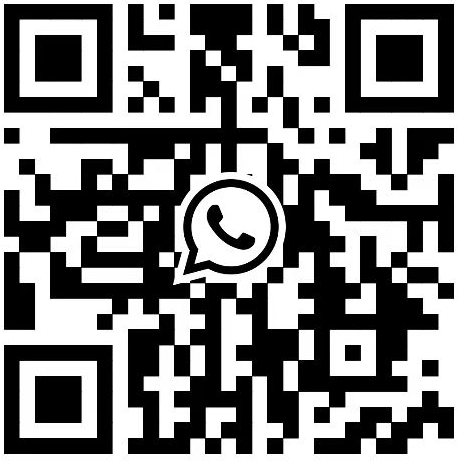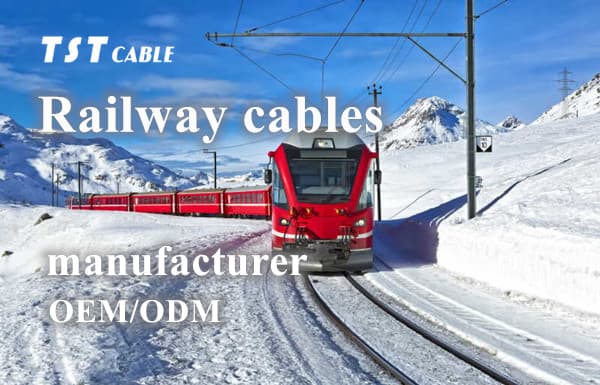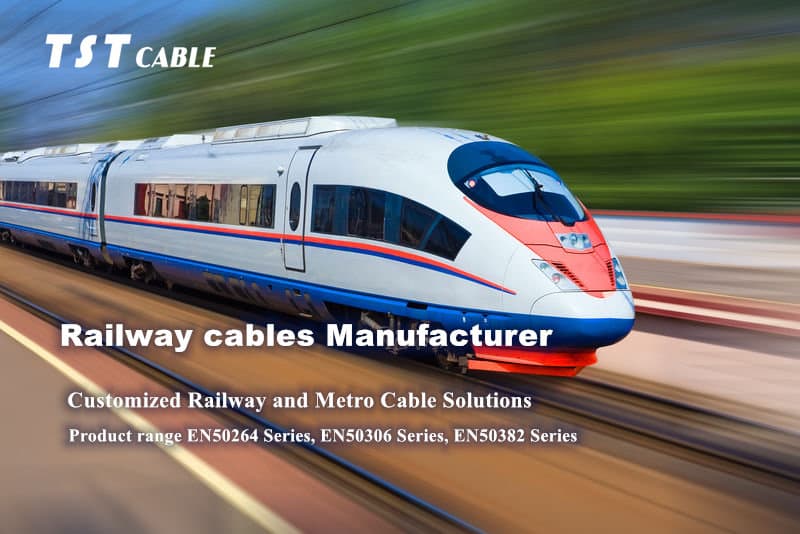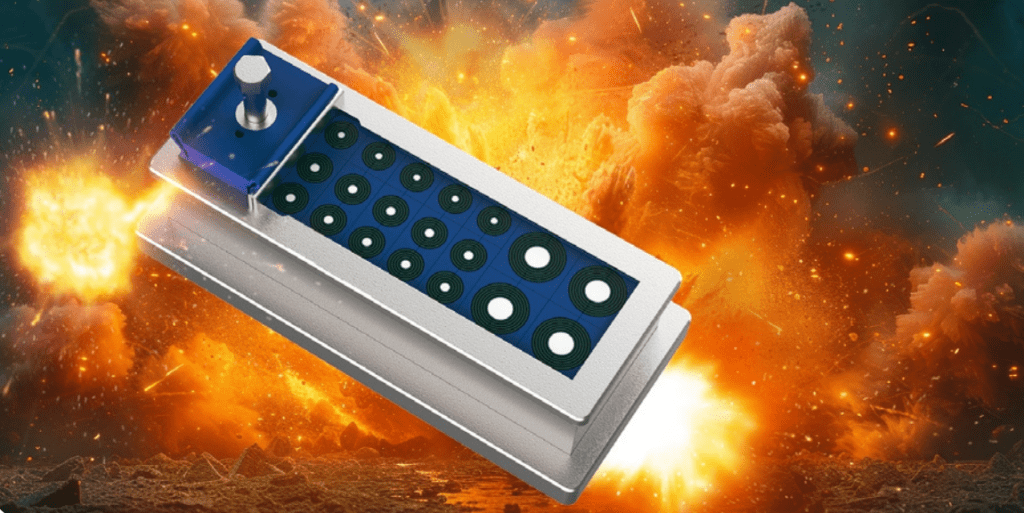As an important part of modern urban rail transit, the safety performance of railway cables is of vital importance. As one of the key components of railway cables, temperature sensor cables undertake the important task of real-time monitoring of locomotive temperature changes.
Temperature sensor cables are mainly composed of temperature sensors, cables and connectors. Its working principle is to use the sensitive elements of the temperature sensor to convert temperature changes into electrical signals, which are transmitted to the monitoring equipment through cables to achieve real-time monitoring of locomotive temperature. During operation, rail locomotive temperature sensor cables need to withstand a variety of harsh environments such as high temperature, vibration, and electromagnetic interference, so their performance requirements are relatively high.
Main application parts of locomotive temperature sensors
(I) Motor stator core
Applied in the motor stator core. The temperature sensor cable in this part must have the characteristics of high and low temperature resistance and impact and vibration resistance.
(II) Rotating end and non-rotating end
Applied in the rotating end and non-rotating end. The cable in this part must meet the requirements of low-smoke halogen-free flame retardant 200℃ temperature measurement cable, rated voltage 750V, high insulation heat resistance grade, high insulation core wire tensile strength, and high thermal aging life.
(III) Gearbox and axlebox
When used in gearbox and axlebox parts, it must have oil resistance, vibration resistance and other characteristics.
The importance of temperature sensor cable
(I) Ensuring safe operation of trains
Temperature sensor cable plays a vital role in the operation of trains. It can monitor the temperature of train motors in real time. When the motor temperature is too high, it may cause failures or even fires. Timely monitoring can ensure the safe operation of vehicles.
(II) Ensuring stable operation of equipment
The impact of cables on equipment stability cannot be ignored. The main function of sensor cables is to ensure the accuracy of sensor signal transmission.
(III) Improving overall performance
Temperature sensor cables have a significant effect on improving the overall performance of trains. By monitoring the motor temperature, cables can help optimize the operating efficiency of the motor, thereby improving energy efficiency.
Performance of temperature sensor cables
(I) Heat resistance
Heat resistance is one of the key characteristics of cables. Cables of different temperature grades show different characteristics in terms of heat resistance. For example, the low-smoke, halogen-free, flame-retardant 180℃ temperature measurement cable has a rated voltage of 750V and a temperature range of -50 – 180℃, which means it can work stably in a higher temperature environment. The heat resistance of this cable allows it to be used in parts such as the stator core of the motor. During the operation of the motor, even if the temperature rises, the cable can still work properly. Another example is the low-smoke, halogen-free, flame-retardant 200℃ temperature measuring cable, which has a rated voltage of 750V, a high insulation heat resistance level, a large tensile strength of the insulation core wire, and a long thermal aging life. This cable is suitable for parts with high temperature requirements such as rotating ends and non-rotating ends. In high temperature environments, it can maintain good performance and avoid cable damage due to excessive temperature.
(II) Insulation performance
Insulation performance is crucial for cables. In different environments, cables need to have good insulation reliability. To ensure insulation performance, cables usually use insulating materials, such as insulating core wires. The choice of insulating materials directly affects the insulation performance of cables. For example, in a humid environment, the insulation material of the cable needs to have moisture-proof properties to prevent moisture from entering and causing the insulation performance to deteriorate. In a high voltage environment, the insulating material must be able to withstand higher voltages to ensure the safe operation of the cable. In addition, the quality and structure of the insulating core wire will also affect the insulation performance. Like the low-smoke, halogen-free, flame-retardant 200℃ temperature measuring cable provided by TST CABLES, its insulation core wire has a large tensile strength and can maintain good insulation performance in complex environments, ensuring the stability of signal transmission.
(III) Aging resistance
The aging resistance of cables is affected by many factors. Among them, the choice of materials is one of the key factors. Aging-resistant materials can effectively improve the aging resistance of cables. For example, TST CABLES’s low-smoke, halogen-free, flame-retardant cables use special aging-resistant materials, which make them less prone to aging during long-term use. In addition, the structural design of the cable also has an important influence on the aging resistance. Optimizing the cable structure, such as reasonably designing the cable’s shielding layer and sheath, can reduce the impact of external factors on the cable, thereby improving the cable’s aging resistance. At the same time, during the use of the cable, environmental factors such as temperature and humidity will also accelerate the aging of the cable. Therefore, when selecting cables, these factors should be fully considered to ensure that the cable maintains good performance within the expected service life.
(IV) Anti-interference performance
In complex electromagnetic environments, the anti-interference performance of cables is very important. The cable may be subject to electromagnetic interference, affecting the accuracy of signal transmission. In order to improve the anti-interference performance, cables have taken a variety of measures. Among them, the shielding layer is one of the commonly used means. By setting a shielding layer on the outside of the cable, external electromagnetic interference can be effectively isolated. For example, TST CABLES’s low-smoke, halogen-free, flame-retardant, thin-walled insulated multi-core shielded cable, its shielding layer can effectively block electromagnetic interference and ensure the stability of signal transmission. In addition, reasonable wiring can also reduce the impact of electromagnetic interference. During the cable wiring process, avoid crossing with other interference sources and arrange the direction of the cable reasonably to reduce the degree of electromagnetic interference. At the same time, the selection of cable materials with anti-interference performance can also improve the anti-interference ability of the cable.
In the field of rail transit, the selection of cable specifications is crucial. Different application scenarios have different requirements for the number of cores, cross-sections, voltages, etc. of the cable. For example, in the stator core, rotating end and non-rotating end, gearbox and axle box of the locomotive motor, the appropriate cable specifications need to be selected according to the actual situation.
TST CABLES has been deeply involved in the field of rail transit for 13 years, and all products produced meet relevant certification standards, such as EN45545-2, TB/T1484.3 and other standards. At the same time, it has also passed relevant certifications of China Railway, such as EMU standard TJ/CL313-2014, GB/T 42740-2023 and CRCC certification.
TST CABLES’ main products include EN50264 series, EN50306 series, EN50382 series, thinned cables, data cables, sensor cables, jumper cables, high temperature resistant cables, high cold cables, fire resistant cables,Railway Infrastructure Cables,etc.
The product supporting fields involve vehicle equipment, such as traction systems, network systems, jumper systems, driver control systems, braking systems, etc., involving railway signals such as vehicle-ground wireless communication systems, train operation control systems, computer interlocking systems, track circuits and automatic blocking systems, etc.
Also available in:
English





